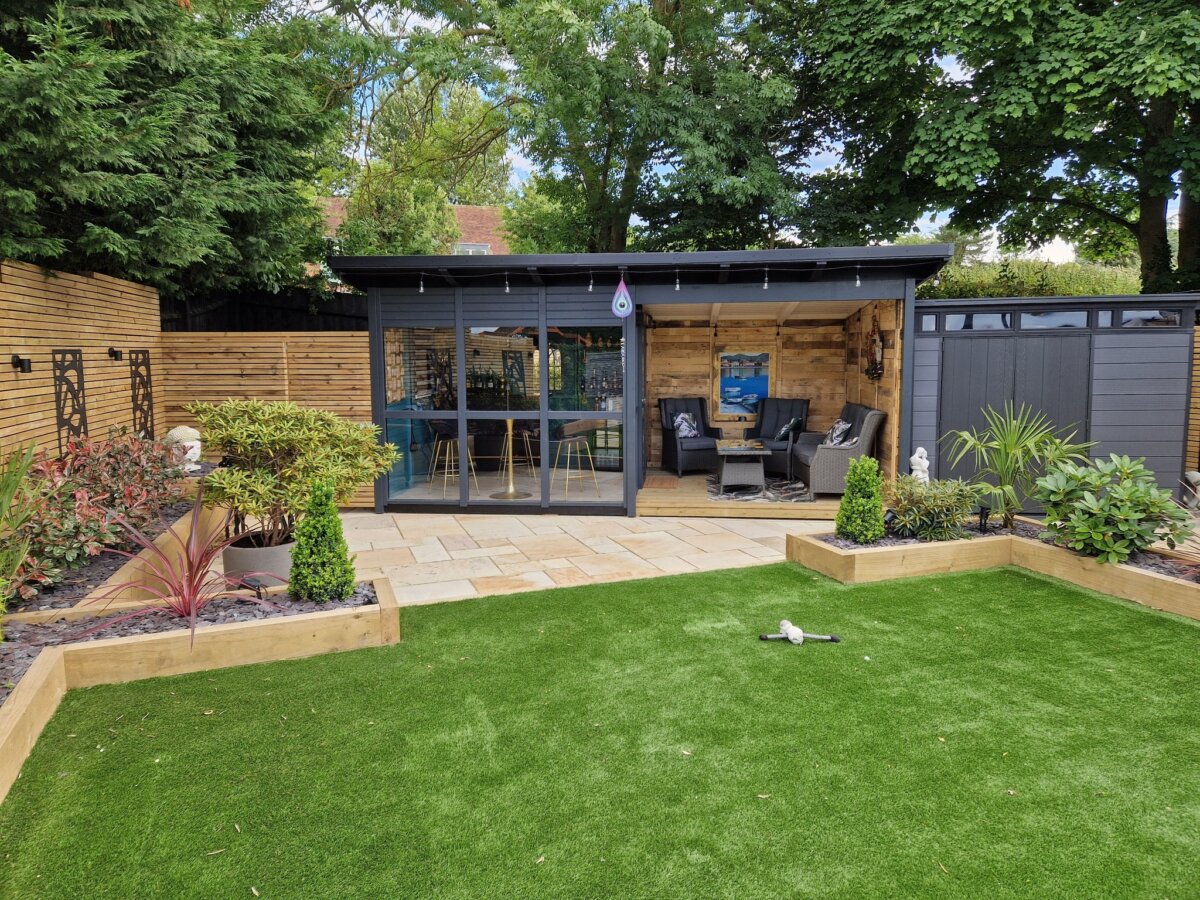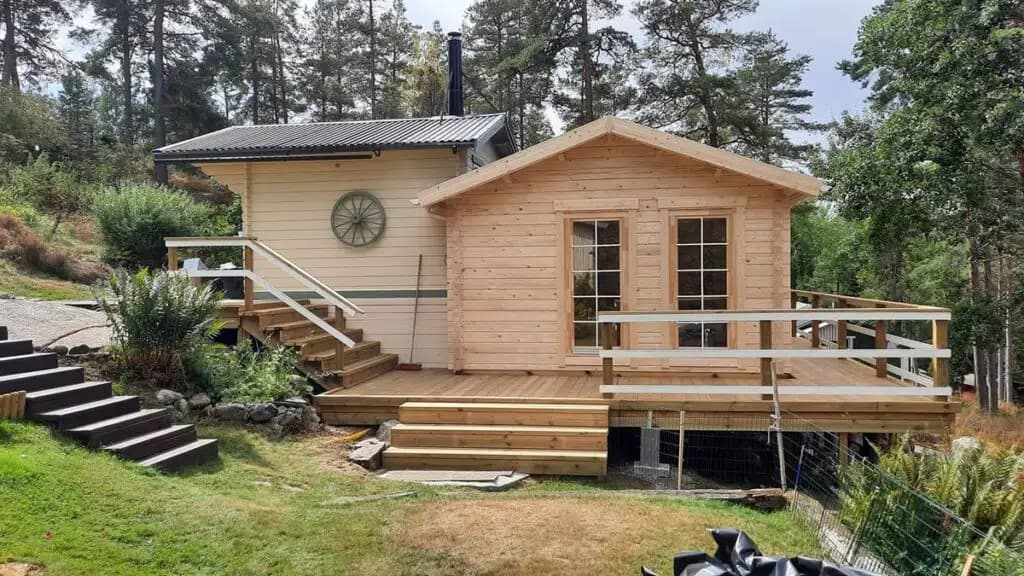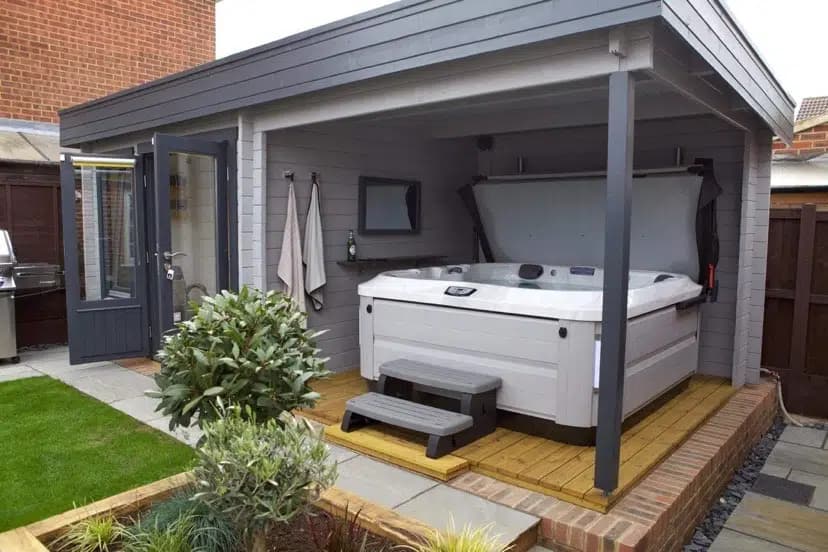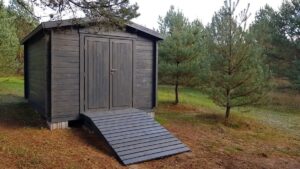
If you have a garden and want to make the most of the space available to you, a garden room might be the exact life upgrade you’re looking for. Garden rooms are ideal for storing tools, creating a small corner dedicated to hobbies and hosting, or even expanding your living space! However, there are so many options available and it’s easy to get overwhelmed with choice.
In this guide, we’ll explain how to select the perfect garden room. You’ll learn to consider key factors like size, material, location, and other important aspects, which we’ll cover in a minute.
Before selecting a garden room, take time to consider a few different factors. The time you spend on thinking things through will pay dividends for years and perhaps even decades! Well-maintained and equally important – well made – garden structures can serve generations.
Here’s what to think about:
The size of your garden room should mainly depend on how you plan to use it. Are you looking for storage space for your tools, a small workshop, or even a guest house?
Here’s a basic size reference you can use:
Small (less than 3 m²): Perfect for storing gardening tools, maintenance products, and smaller items.
Medium (between 3 – 6 m²): Ideal for creating a small workshop, a hobby corner, or a garden office.
Large (more than 6 m²): Versatile and spacious, these can be used as a gym, guest house, or even as a recreation room for ping pong or billiards.
Location is key for your shed to function efficiently. If you plan to install it on rural land, it’s advisable to check local regulations, as there may be restrictions on size or use.
Here are some key recommendations:
Distance from main house: If you plan to use your garden room as an office or studio, placing it away from the main house can provide more seclusion.
Accessibility: It’s best to place the garden room near the area where you’ll use tools or equipment, for example. This is to avoid unnecessary trips between different parts of the property.
Ground conditions: Ensure that the ground is stable and level. This is crucial in preventing long-term structural problems.
Shade or sun: Timber garden rooms may benefit from partially shaded areas to extend their durability. If your garden room will be in direct sunlight, consider a resistant roof and protective treatment against UV rays.

Your choice of material will influence not only aesthetics but also durability, maintenance, and price. The most common options are:
Wood: Wooden garden houses are a classic option, especially appreciated for their natural appearance and thermal insulation properties. Wood also has a reduced environmental impact as it’s renewable and recyclable.
Metal: Metal sheds and garden rooms are very durable and weather-resistant. The challenge is that they may have more variations in temperature and do not provide good insulation.
Plastic or resin: These sheds and garden rooms can be easy to assemble and have low maintenance requirements. They are also quite moisture-resistant. Plastic can be an attractive option because it’s cheap, but it doesn’t come without drawbacks. Microplastics in the environment are an increasing concern and the durability and appearance aren’t up to par with wood or metal.
Wall thickness affects the thermal insulation and durability of the structure considerably. In Spain, wooden houses are often made with walls in 44mm, 70mm, or even higher thickness to offer better thermal performance. One great option is glued laminated timber (glulam), which consists of several layers of wood joined with special adhesives. Glulam provides greater structural stability and reduces the risk of the material warping among other benefits.
The garden room’s style should match the overall design and aesthetic of your garden. If it’s close to the main house, make sure to also consider how they will look side-by-side. These days there are many different styles to choose from: rustic, modern, traditional, and even Nordic style options. It’s easy to choose a design that aligns with the surroundings and reflects your personal style and tastes.
Don’t forget to think about the primary use of the garden house. Will it be just for storing tools, or do you have something more versatile in mind – such as a DIY space, a studio, or even a small hosting space?

Wooden garden rooms have many benefits that do make them stand out compared to the alternatives. Besides their obvious visual appeal, they are the most ecologically friendly and healthy choice. Here are some of these benefits:
Wood is a natural, biodegradable, and renewable material. Unlike other materials such as plastic, wood has a much lower environmental impact, as it grows quickly and can be recycled at the end of its life. Wooden garden rooms actually capture CO2 while in use.
Thanks to the natural properties of timber, it can improve indoor air quality. Unlike synthetic materials, wood allows better air circulation and reduces moisture buildup. This is especially beneficial if you plan to use your cabin as a place to spend time in, as it will create a healthier environment.
Wood is an excellent thermal insulator. If you want to use your shed year-round, wood will help maintain a more stable interior temperature, regardless of the season. However, it’s important to consider the thickness of the walls and finishes. Thicker walls and additional insulation will improve the garden room’s energy efficiency.

Maintenance is essential to ensure your shed stays in good condition for many years. Depending on the material you choose, maintenance requirements will vary.
Wooden sheds require more attention to prevent decomposition, especially if exposed to moisture or extreme temperature changes. Be sure to apply a wood protector that repels moisture and insects. It’s also important to check the roof and joints to prevent water leaks.
Metal sheds are more resistant, but they can rust over time if not properly cared for. It’s recommended to apply an anti-corrosion treatment periodically to prevent moisture from damaging the structure.
Resin or plastic sheds are easy to maintain, as they don’t require special treatments. However, it’s advisable to clean them regularly and ensure there’s no buildup of dirt or water along the edges.
Depending on how you use your shed, you may need temperature control. Wooden sheds offer good insulation, but if you plan to use them during winter or in hot climates, consider installing a heating or ventilation system.
Wall and roof insulation: If you want a comfortable space any time of year, wall thickness and roof insulation are crucial factors. Good insulation will help reduce energy costs if you decide to install heating or air conditioning.
Ventilation: Make sure your shed has adequate ventilation to prevent moisture buildup, especially if you’ll use it for storage or as an office.
The shed’s roof not only serves an aesthetic function but also influences the durability and insulation of the space. Here are the main roof options:
Flat roof: Simpler to build and usually more economical. However, it can accumulate water if it doesn’t have the proper slope, which could lead to leaks.
Gable roof: More traditional and effective at preventing water accumulation. This type of roof allows water to easily run off, reducing the risk of leaks.
Pent roof: Ideal for gardens with limited space. This type of roof is simple and economical, but it can also accumulate water if not well-designed.
What’s the best material for a garden room?
The best material really depends on your needs and wants. If you’re looking for an eco-friendly option with good insulation, wood is always an excellent choice. If you prefer something more low-maintenance, metal or plastic could fit the bill.
Which garden room is easiest to assemble? Plastic or resin sheds are generally the easiest to assemble, they usually come in prefabricated pieces that require basic assembly.
What type of shed is best? This depends on how you’ll use it. A wooden or metal shed might be ideal for its robustness or insulation capacity, while for lightweight structures that are easy to move, plastic or resin are more practical options.

Choosing the ideal garden room depends on several factors, such as how you’ll use it, available space, materials, and the maintenance you’re willing to undertake. Take time to evaluate the available options and ensure the garden room you choose is functional and is in line with your needs and lifestyle.
With all the advice and information provided in this guide, you now have all you need to make an informed decision. Give your garden a your garden into a more useful and beautiful space with your ideal garden room!